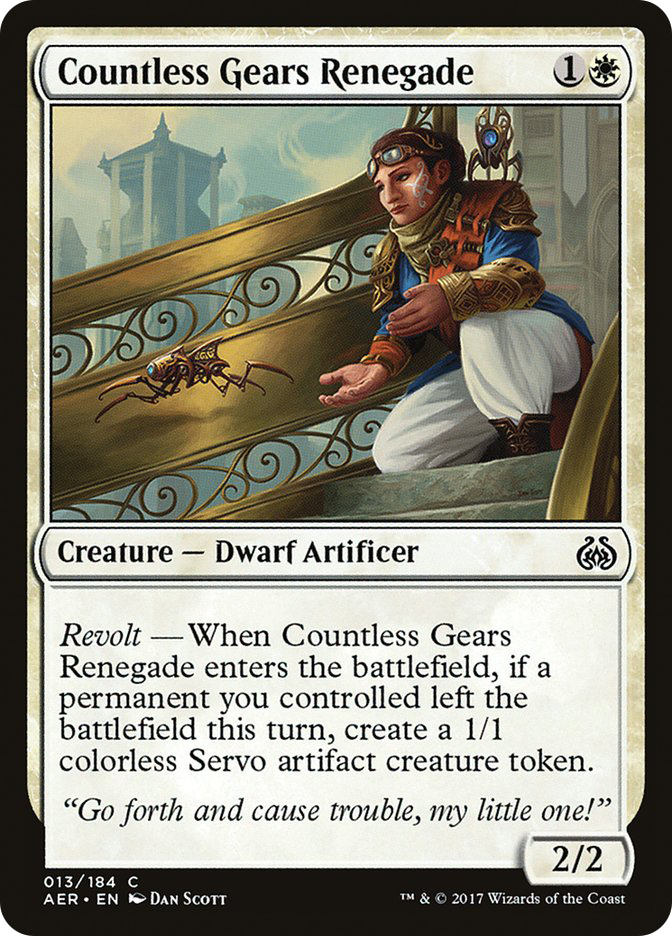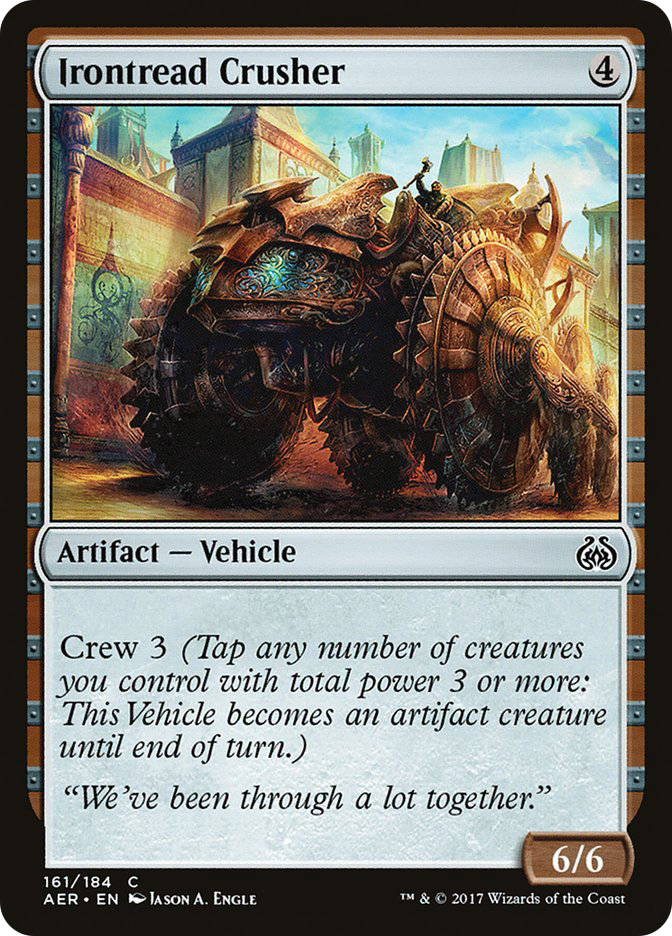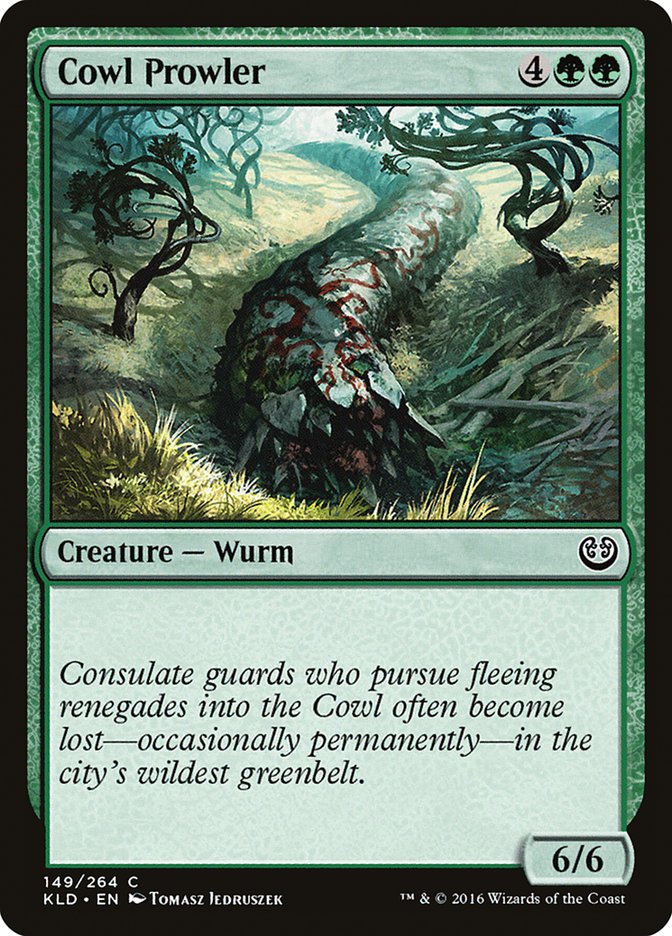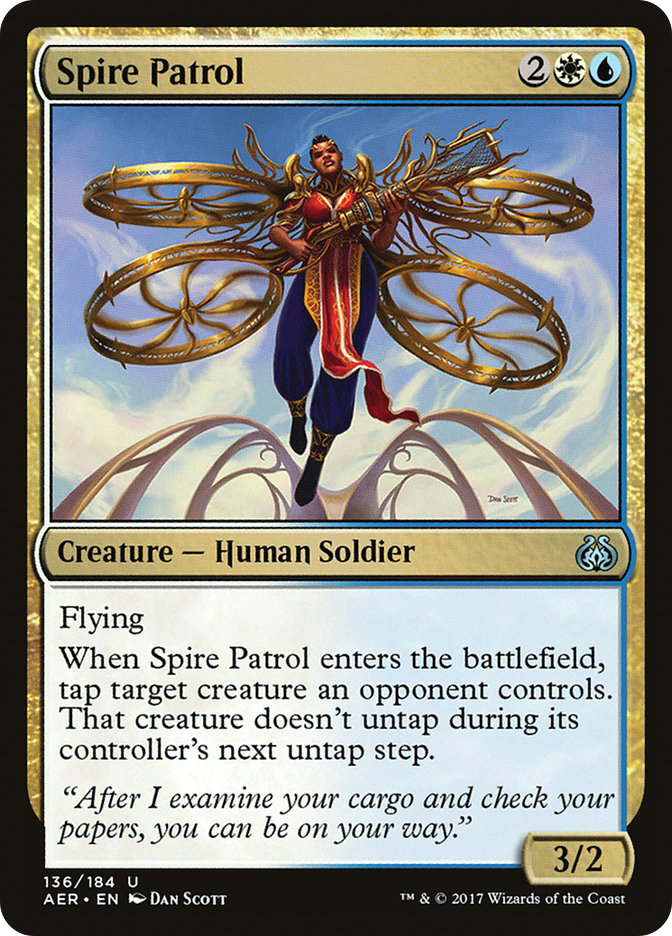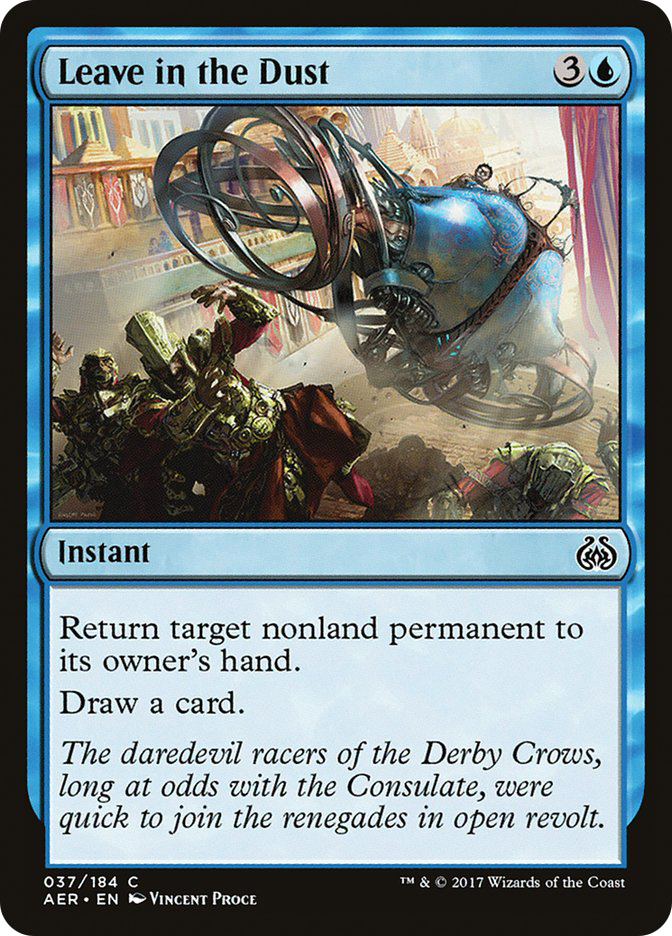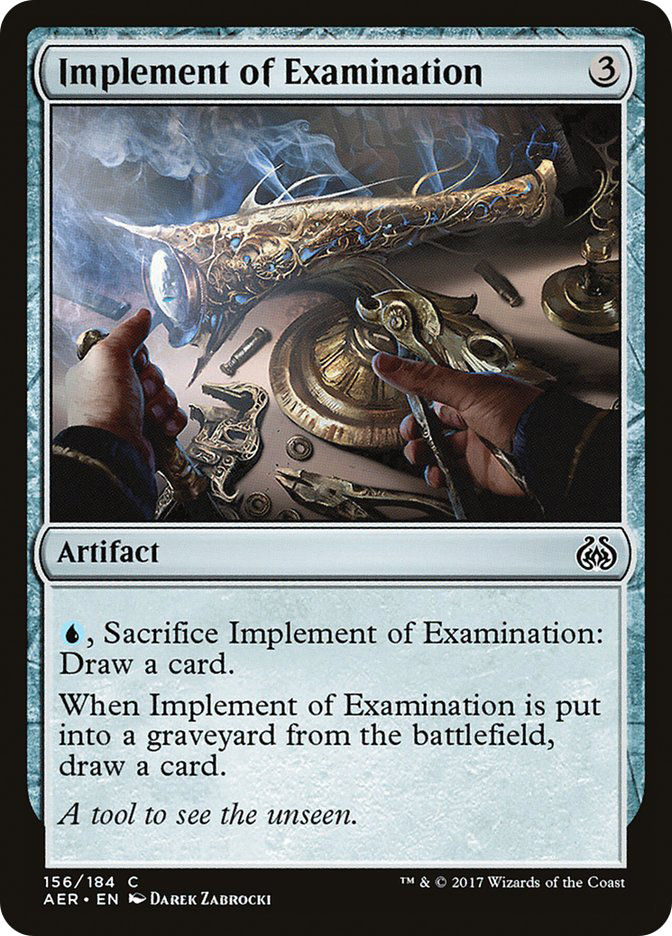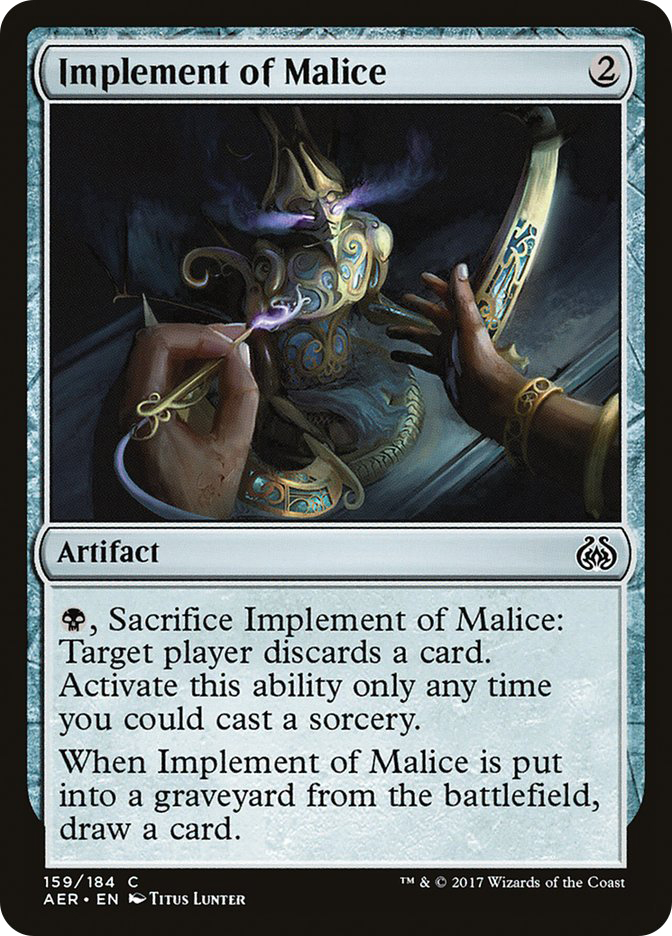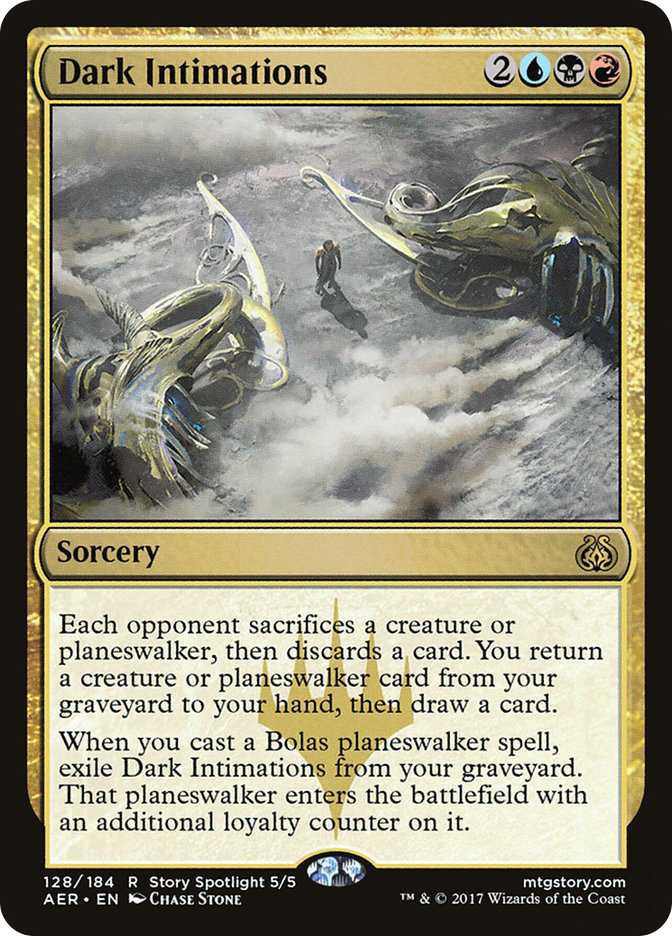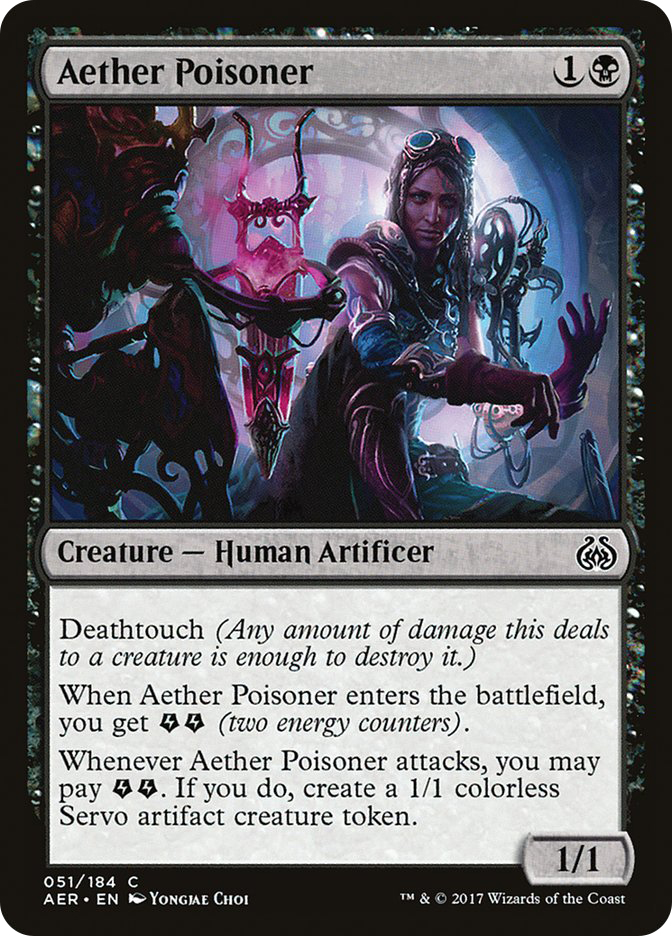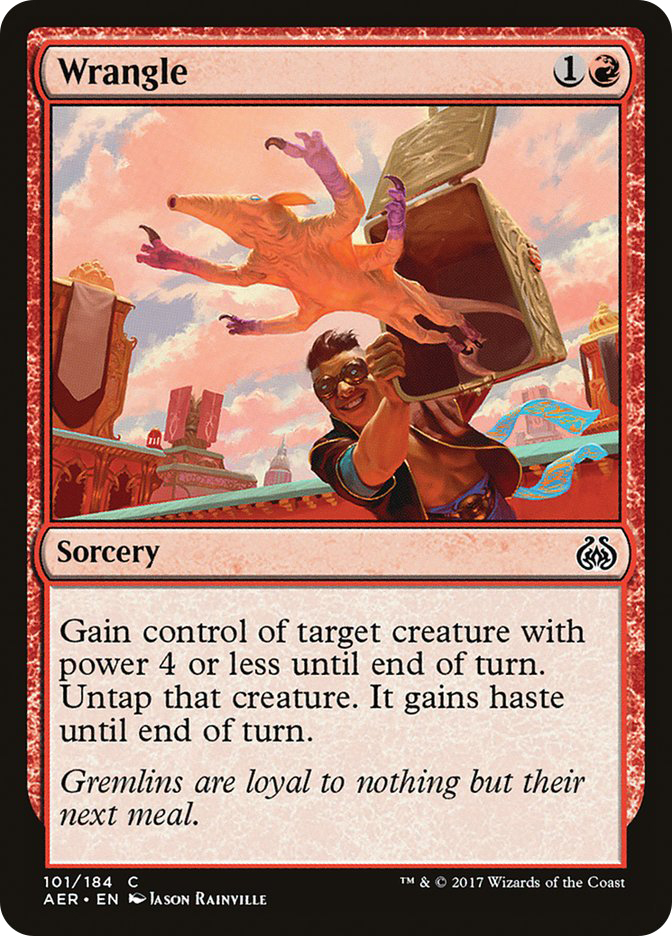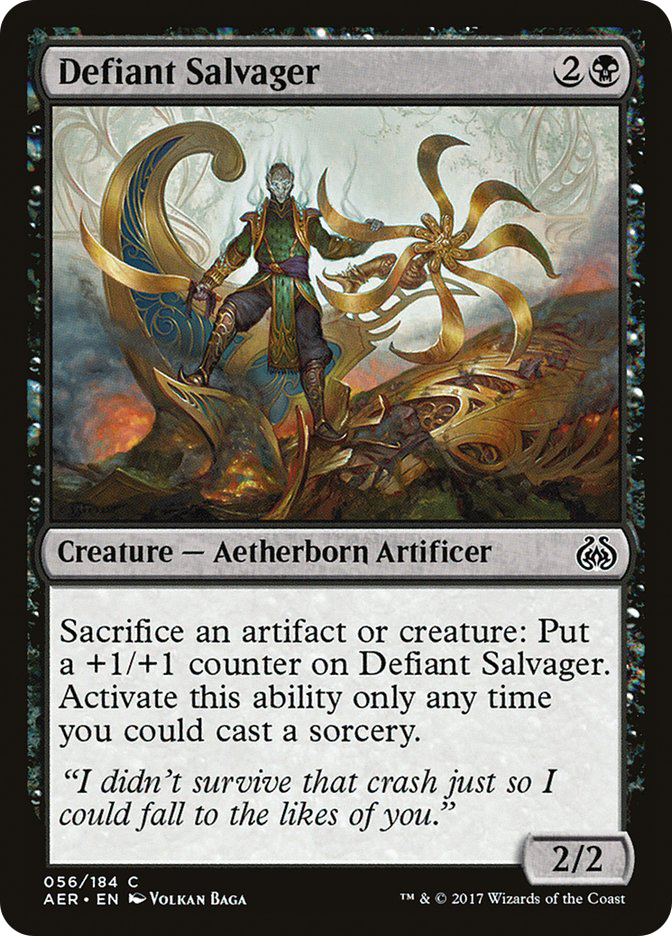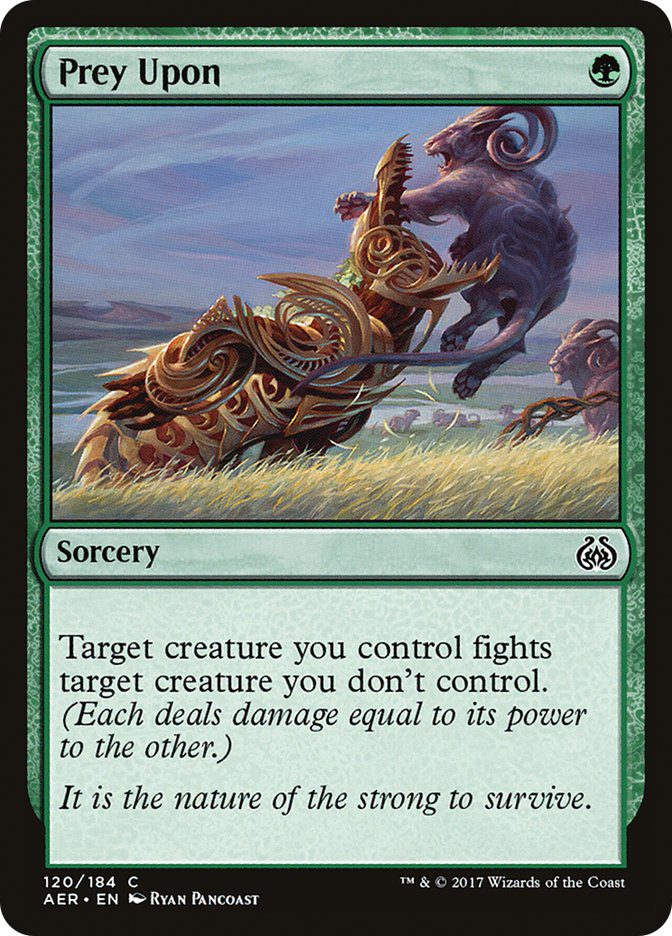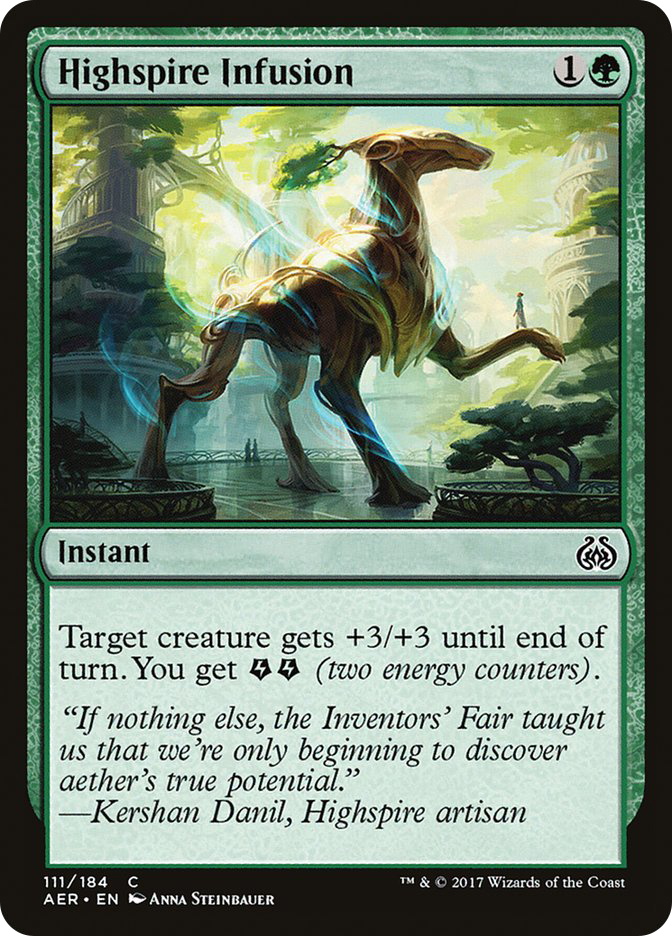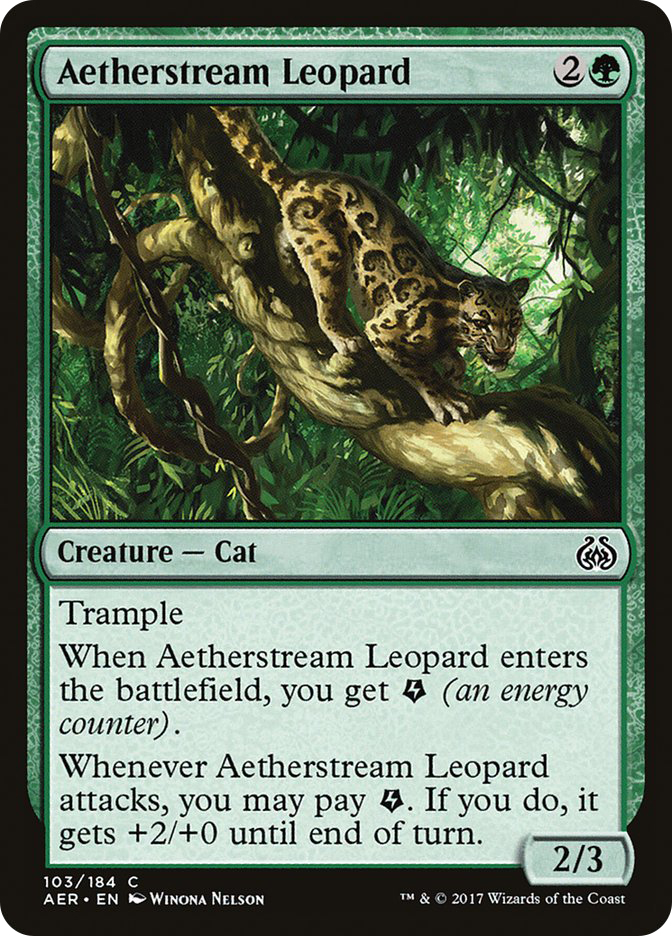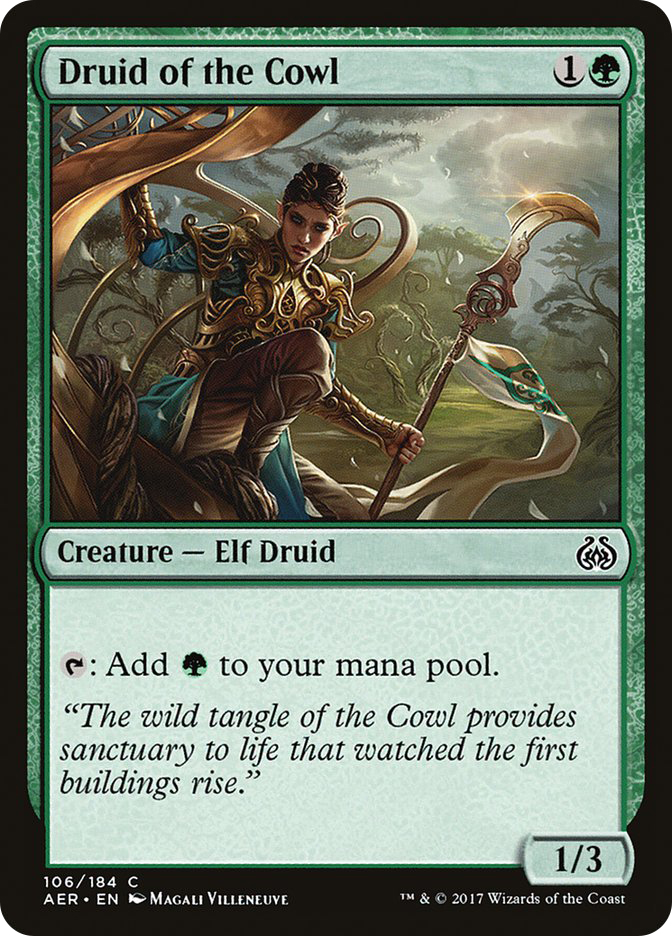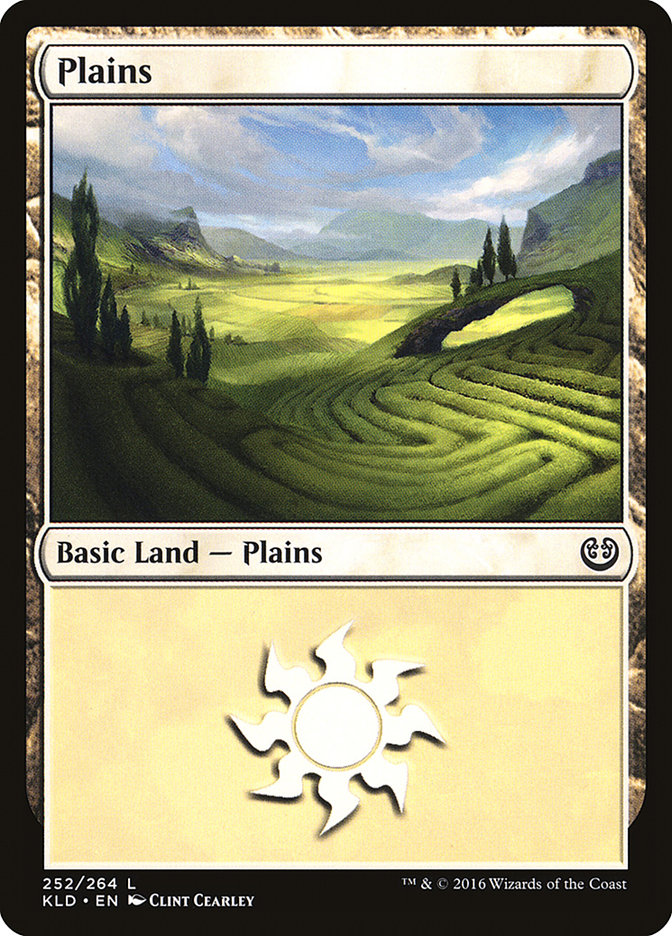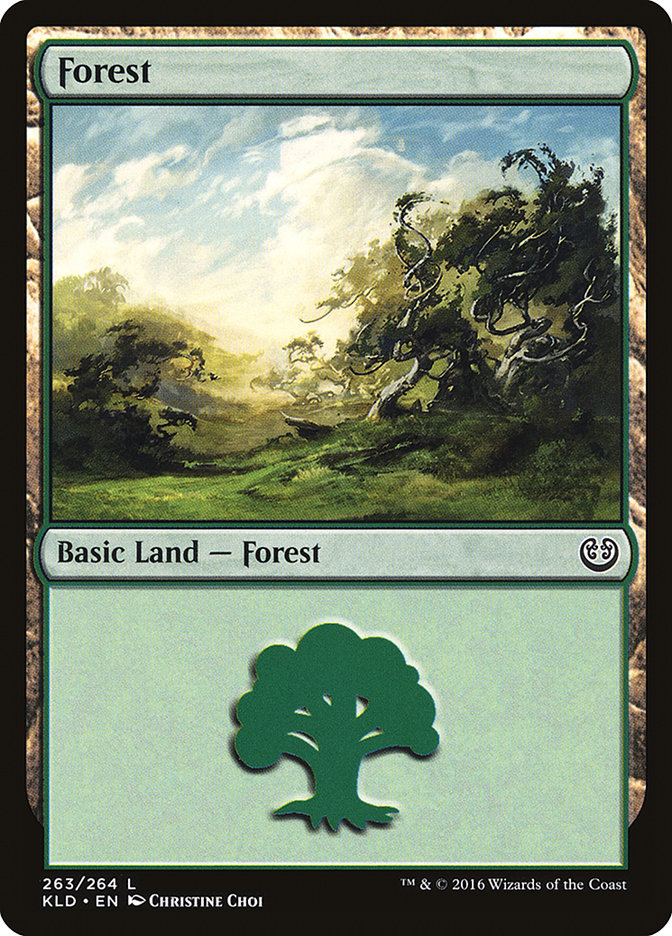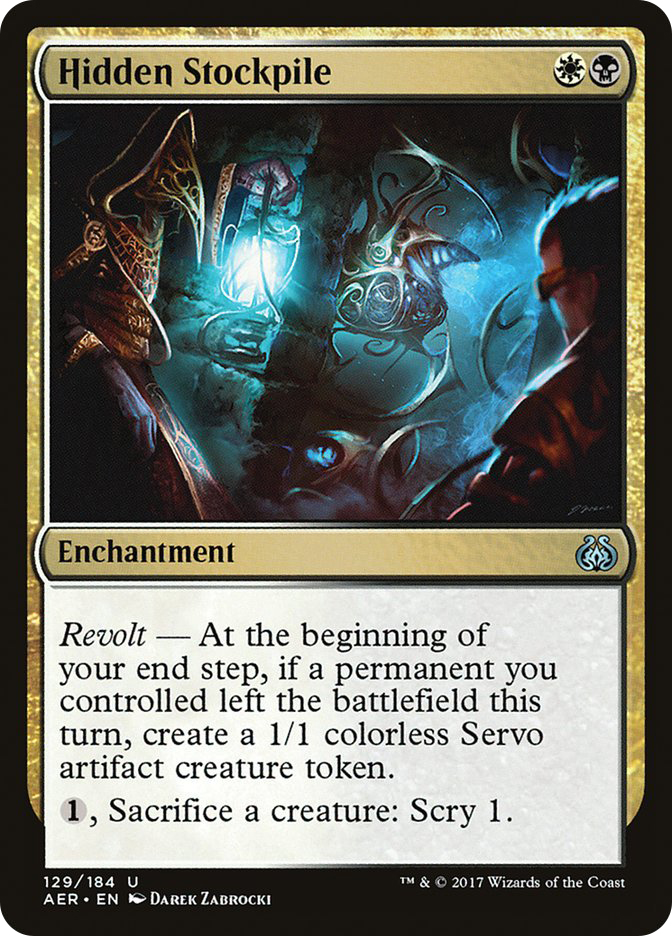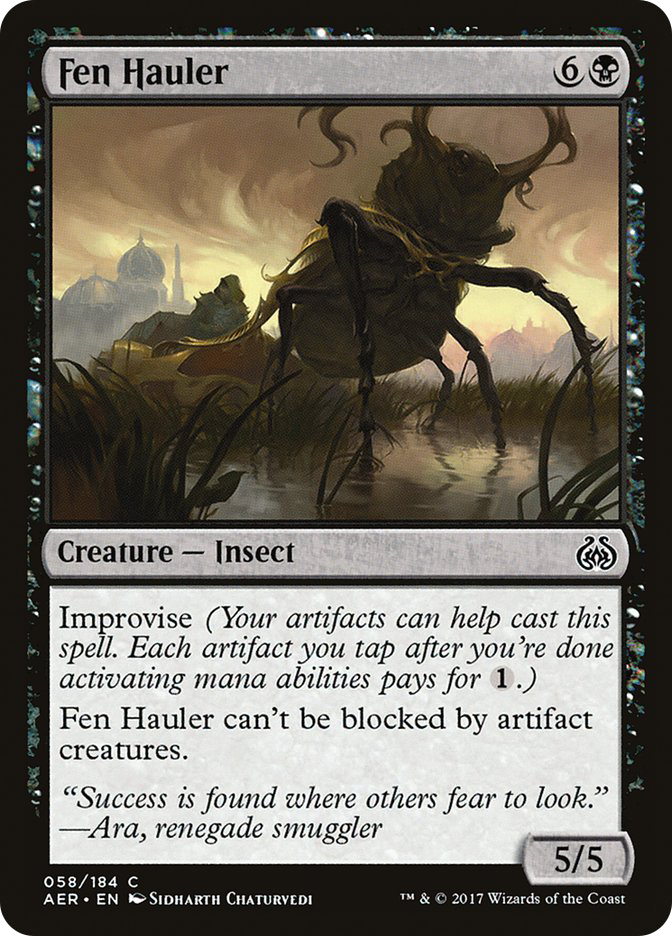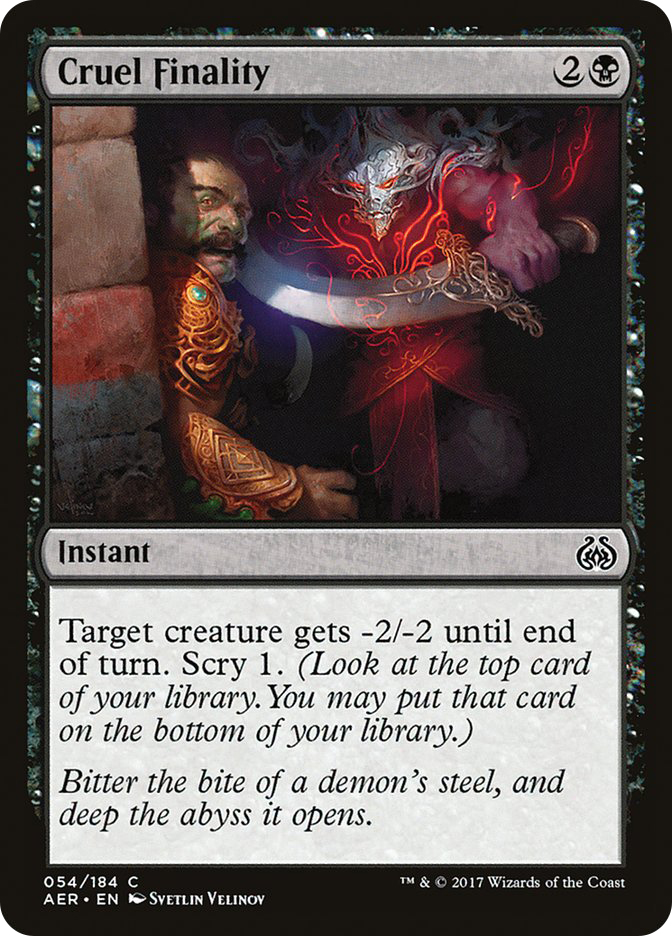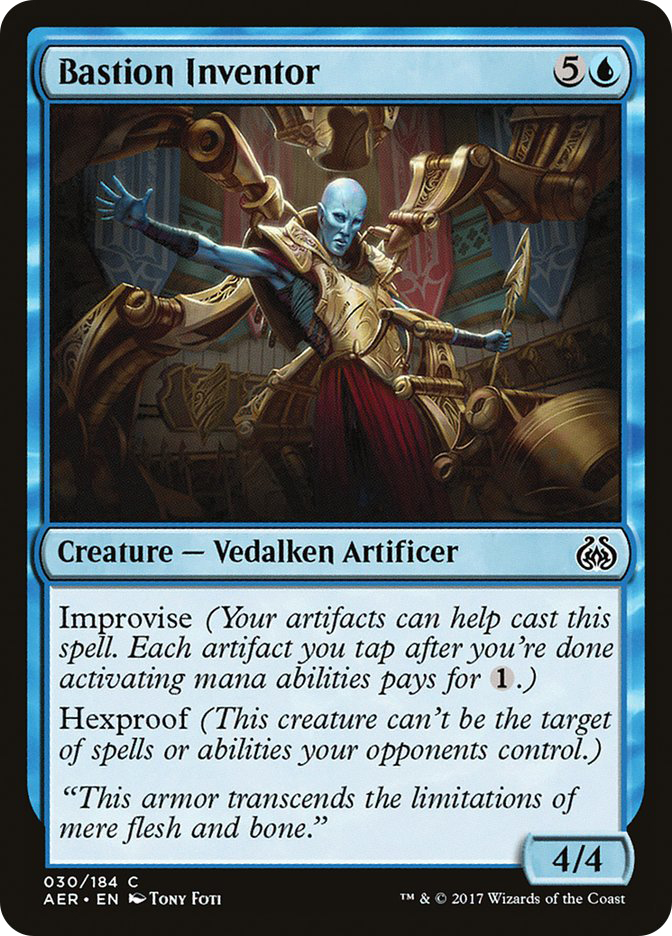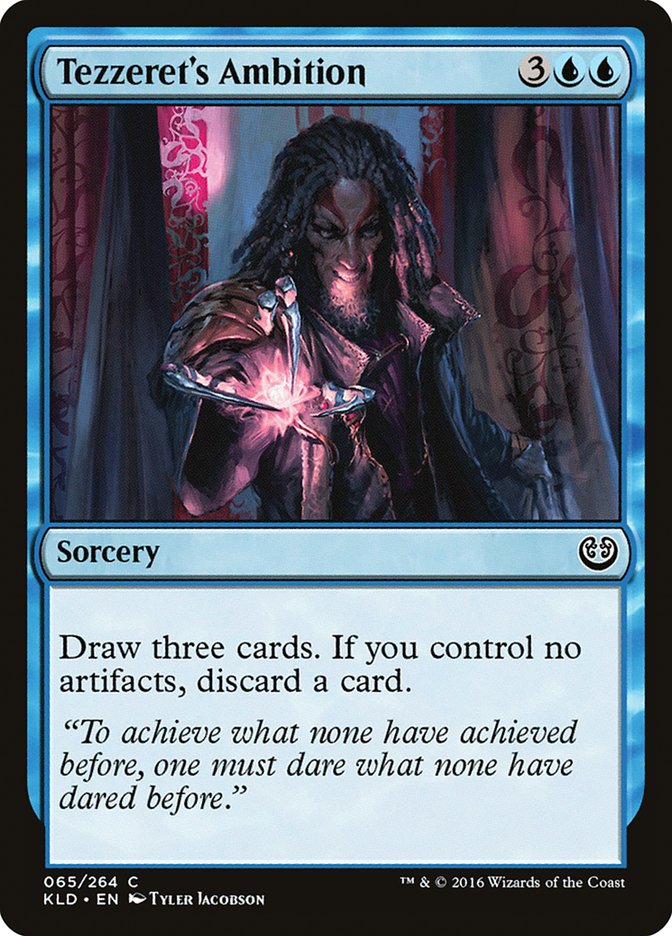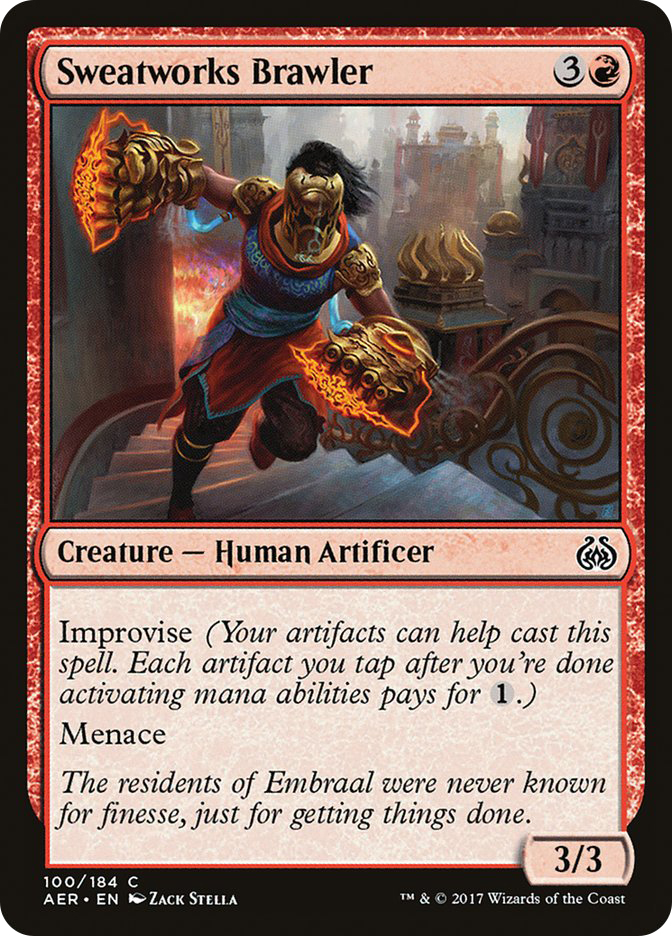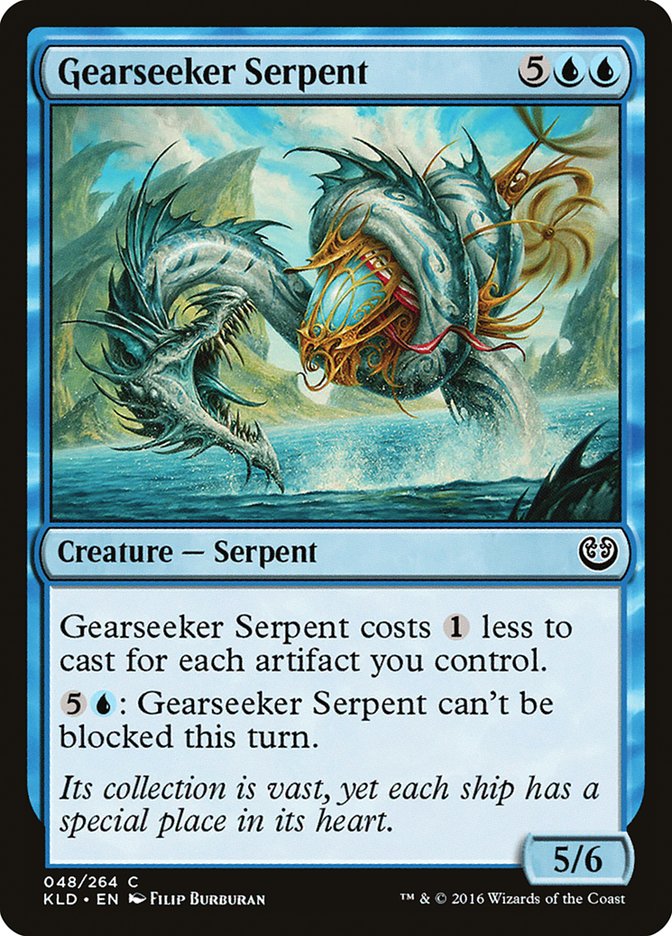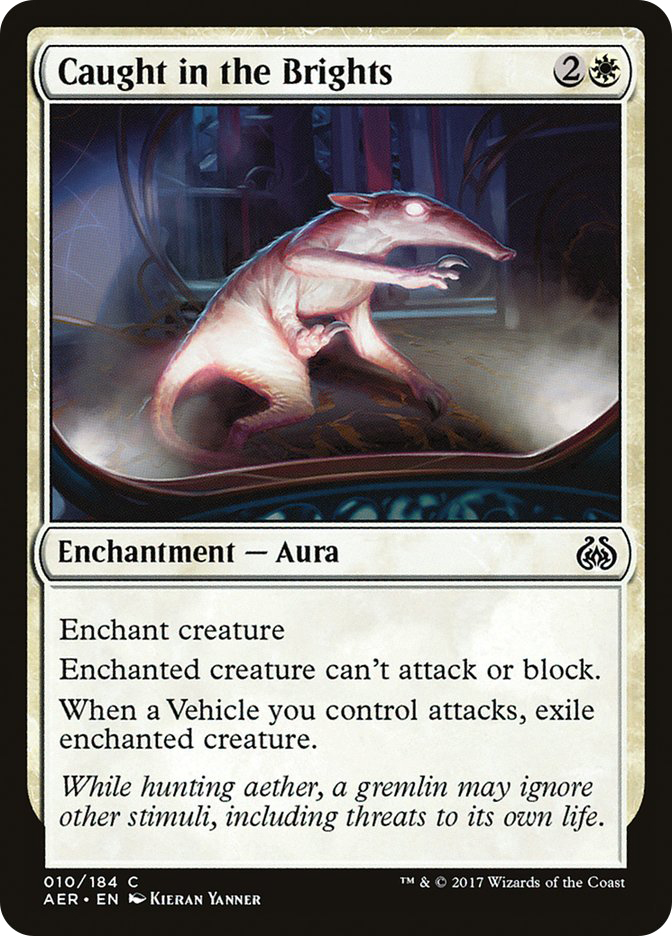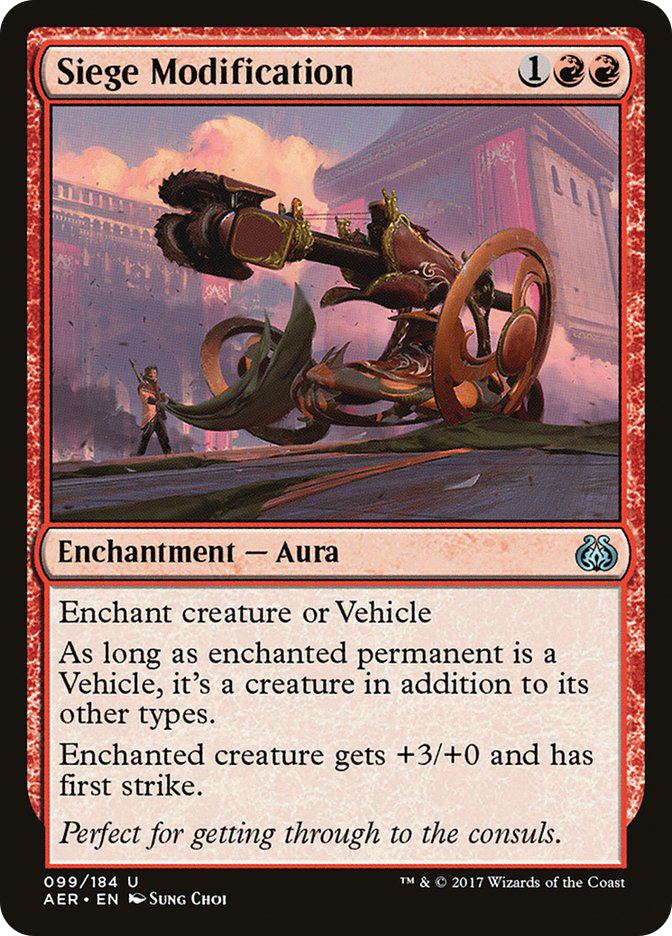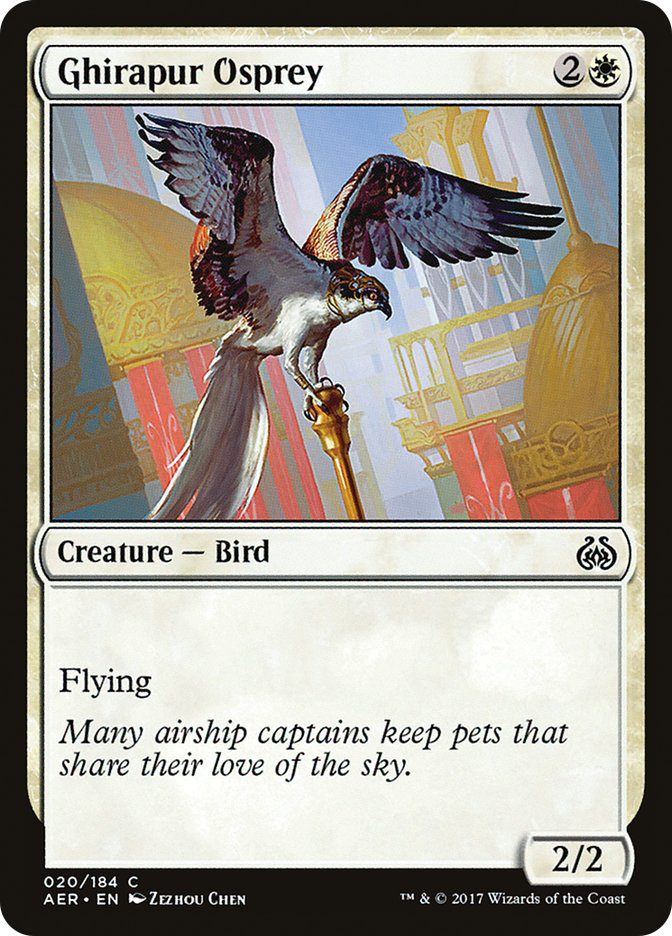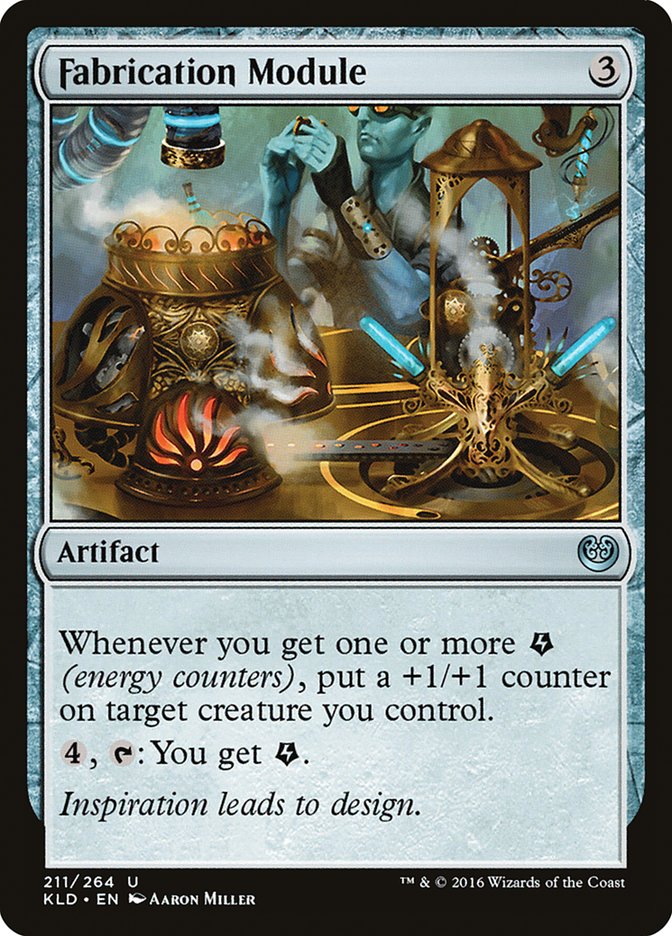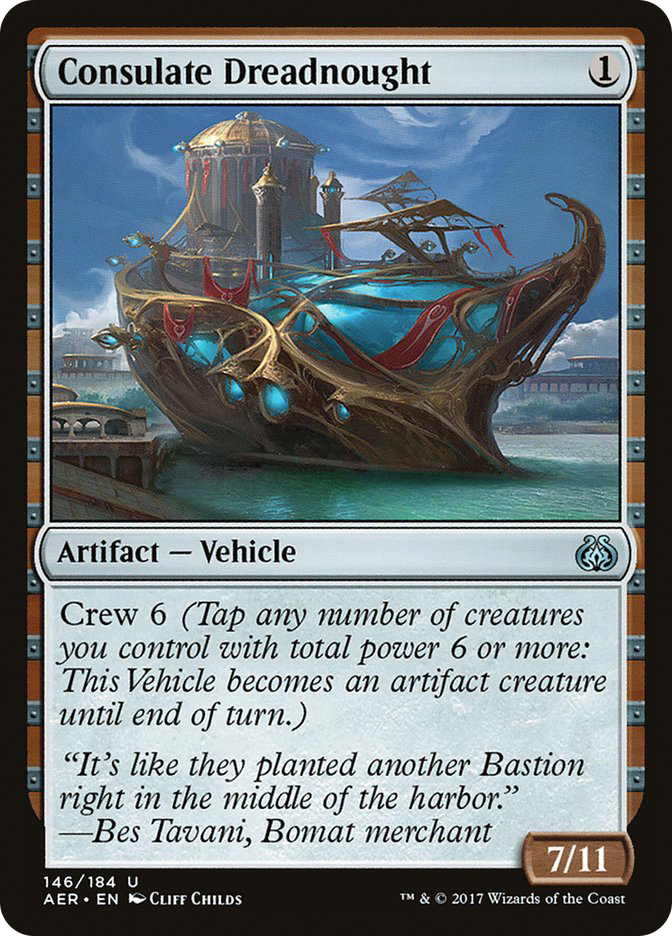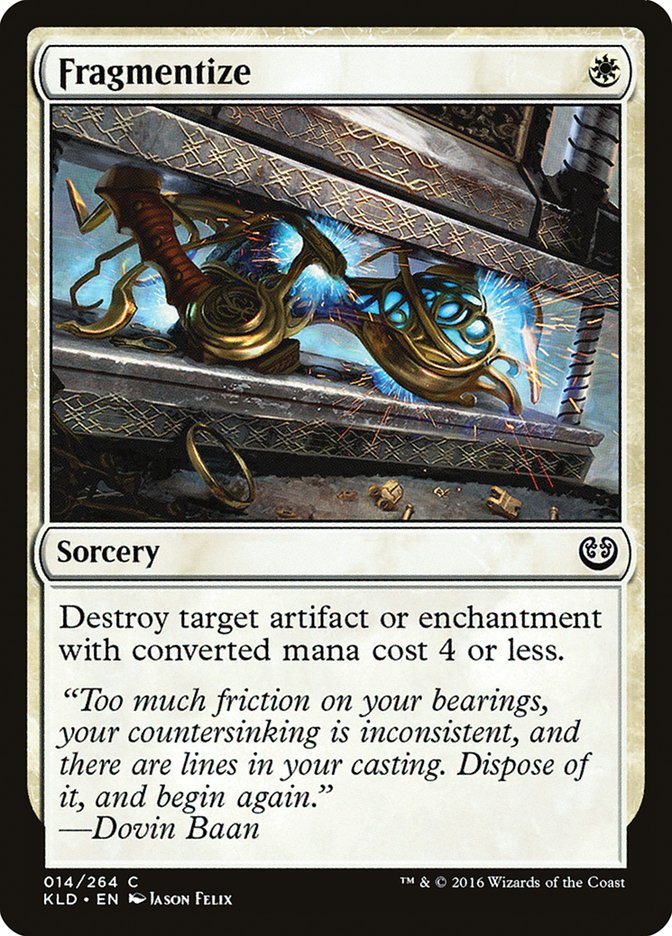With #GPOrlando coming, it’s time for a refresher on Aether Revolt Limited. While it is definitely an ABC format, there are tons of small situational interactions that can be used to gain an edge. Here are some of the key things I look for across the format and different color pairs.
Overall:
This is a story of Aether Revolt Limited in three cards.
Countless Gears Renegade looks like it should be great. Plenty of ways to recycle it, fine baseline two-drop, and with revolt you get a Glint-Sleeve Artisan for one less. Turns out the cost of enabling revolt makes it inefficient, slows the benefit to the point a 1/1 doesn’t matter much, and that a random 2/2 doesn’t do a lot. Weird and tricky payoffs aren’t the name of the game here, just good rates.
Irontread Crusher is a card that looks mediocre, like Ballista Charger in Kaladesh, but in practice is very good. If the format is about good rates, presenting one card for 6/6 of stats is huge. Creature sizing hovers in the 3/3 for mid-game and caps around 5/5, so the 6/6 bashes over all the other big things and forces two-for-ones with smaller cards. Irontread Crusher also forces the kind of synergy Aether Revolt is about: small shifts to maximize powerful effects. You want to be playing Bastion Enforcer and other three-power creatures with it, not Ghirapur Osprey and two-power ones. There are a lot of mediocre filler cards to choose from in the format, and you should select them to make your unique effects as good as possible.
Cowl Prowler should be an Irontread Crusher without a drawback, but it is pretty bad. There aren’t many good ways to spend excess mana in the format as the Automaton cycle is low-reward for the cost. Your sixth land maybe helps one or two cards in your deck and puts you down a full card in a format where few things pull ahead card for card parity. By default I am playing sixteen lands in this format to reduce the chance of drawing extras.
W/U:
The multicolored cards in Aether Revolt Draft are almost all amazing, as in “if I first-pick a white card, a second-pick Spire Patrol might be a worthwhile gamble because it outclasses everything else by so much.” W/U specifically has issues as it melds the two lowest-power colors together and the colors are split between synergies (improvise and artifacts versus revolt and aggression), so many of the successful W/U decks I have seen involve multiple copies of this card to override that issue.
Leave in the Dust looks clunky but is actually good. You should probably play every copy you draft in your blue decks and it is easy to pick up, as it isn’t a huge draw to a shallower color. W/U specifically has issues with being outclassed in the mid-curve, as its four-drops are way worse than red’s or green’s. Cast Leave in the Dust to
U/B:
U/B is obviously an improvise color combination, with Fen Hauler and Bastion Inventor as two larger common payoffs to go hard on the synergy. When it comes to artifacts to play when you don’t just have a million Aether Swoopers or Aether Poisoners, I’ve found there’s a legitimate card advantage angle with the blue and black Implements. These cards ramp out one of your improvise threats, which you can then sit behind while cashing in your enablers to bury your opponent in card advantage and win with minimal extra effort.
I generally don’t like splashing in this format because there are so few cards powerful enough to deserve a splash, but I find myself doing it most in the U/B realm. Part of this is due to it being easy to waffle between the Grixis colors when they share synergies and fill your playables with colorless cards, but part is due to Dark Intimations being an easy mid-to-late pickup that pays off well if you can cast it. Four for one is just absurd, regardless of the card quality picked up by it. Tezzeret the Schemer often poses a similar splash incentive in G/U or U/R, but you shouldn’t be getting that one past the first couple of picks.
Note: Splashing being bad is part of why I think Renegade Map is overrated. Revolt is low-payoff, so you are just playing a tapped land in a two-color deck that should have good mana anyway.
B/R:
The discussion of B/R is mostly a cautionary tale. Aether Poisoner is a good card that I’m glad to take in B/R, but overloading on them is an issue. Red lacks the common artifact payoff on the scale blue has with Gearseeker Serpent and Bastion Inventor. Barring multiple Fen Haulers, you need a density of red threats to push through and win. There are diminishing returns on 1/1 deathtouchers that prolong a game to a state you might not actually be favored from.
The Wrangle sacrifice deck is not a reliable strategy, but it is worth watching for. Wrangle should wheel, so if you see a couple early and start leaning in the B/R direction, consider prioritizing Defiant Salvager or
R/G:
Despite it pairing the two best colors, I’ve disliked R/G in Aether Revolt Draft as the cards are fairly inflexible. Your spells are mostly powerful in the three- to five-cost range, which often leads to scripted one-spell-a-turn plays for the mid-game that can be exploited. If you get behind, it’s hard to turn the corner, especially as your spells are basically creatures as printed and don’t do more going later. Prey Upon lets you cast an extra spell on a key turn that is good when ahead and when trying to break back into a game. You can often get these a bit later than expected, as green is so deep and it pairs poorly with many other colors’ cards.
One other way to turn around from behind is to have tricks that turn the race. A key combination I’ve found to be useful here is Aetherstream Leopard and Highspire Infusion. Aetherstream Leopard is an individually great card, but without a heavy energy theme in Aether Revolt, it often is a one-shot damage punch on a fine 2/3 body. Add Highspire Infusion and you suddenly get a lot more, especially when the Leopard’s trample pushes your extra pump damage through.
G/W:
In a format about individual card quality where mana sinks are scarce, Druid of the Cowl suffers a lot. In G/W it instead solves a problem. There are many good five-drops between the two colors: Dawnfeather Eagle, Lifecraft Cavalry, Riparian Tiger, Skyswirl Harrier, and more. You want to play all of them to increase your good card density, and Druid of the Cowl helps you hit them on time or early. It isn’t quite a Dinosaurs strategy, but I’ve seen four or five cards at five mana be perfectly fine in this archetype.
Due to the higher curve, this is also a deck that wants to play an extra land. By “extra,” I don’t mean eighteen but seventeen. All this talk of no mana sinks, flooding being bad, and cantrips everywhere means my baseline is sixteen lands in Aether Revolt, with Attune with Aether and Renegade Map counting as lands. G/W actually wants the traditional seventeen, as hitting them on-time is crucial all the way to five mana.
W/B:
Hidden Stockpile is the one multicolored uncommon in Aether Revolt I’m not excited by. Spending a card for a slow scry engine just doesn’t have good returns, and you need multiple freeroll triggers from the card before it actually pays back your investment. If I’m already W/B I’ll pick it up, but I’m not taking it as a speculative payoff. The exception occurs when you pick up multiple copies, as that gets out of hand very quickly.
Similar to the note about Aether Poisoner earlier, W/B has issues with winning the game. The black cards just don’t complement the aggressive white strategy well. Most of the successful W/B decks I have seen aim to win via Fen Hauler or a large white flier like Skyswirl Harrier or Airdrop Aeronauts rather than chip-shot damage via
B/G:
I have somehow never drafted B/G in Aether Revolt. I think a lot of this has to do with Winding Constrictor being a legitimate first pick. I’m much more willing to move off it than other people if one of the colors isn’t open, and they are more willing to cut me out of it if they open it. There isn’t really a lesson here; just keep slamming Winding Constrictor and hoping to be B/G.
Cruel Finality isn’t a great removal spell, but it is at both its best and worst in B/G. On one hand, the expensive combat trick aspect of the card is pretty good with green monsters. When they double block your Lifecraft Cavalry, you don’t care what your trick is because it is generating a two-for-one, and green is lacking the removal that Cruel Finality can provide against utility creatures. On the other hand, Cruel Finality is much worse than the Kaladesh black combat tricks. Basically, if I’m in B/G I will gladly play this card, but I will more gladly play other versions of the same effect.
G/U:
G/U garbage is my favorite archetype. You just take the good green and blue cards and end up with a deck. The core is that the good green and blue creatures are all big deals on a single-card level. The weird part of this crushing card quality is you end up with a bit of all the synergies at times. The short version is to mostly ignore that and figure it out later. Sometimes you stumble into hard energy or wanting a few extra artifacts for Bastion Inventors and Gearseeker Serpents. You just have to figure out what you want after you take the cards. It’s fine to split synergies or stick to one. Your cards are just good.
There are a lot of blue commons in Kaladesh that aren’t on-curve efficient, yet when cast have a strong per-card impact on the game, and G/U loves to pick them up late. You have two primary game states: you deploy good cards early and get ahead, in which case clunky powerful cards help slam the door, or your good cards show up to hold the fort and the clunky per-card power carries you over the top in a longer game. You don’t take these cards highly and you don’t want a ton of them, but they are 22nd or 23rd cards that can go toe-to-toe with your opponent’s best cards on impact.
Also note: Tezzeret’s Ambition, Failed Inspection, and many other cards like this pay you off for having extra lands. I’ve easily spent ten mana on spells on back-to-back turns with G/U, and that isn’t something any other archetype can say. That kind of advantage wins you games and give G/U a unique angle in the format.
U/R:
There are two styles of U/R: red aggro with some blue cards and artifacts, or full-on improvise. A lot of this boils down to what improvise payoffs you have. Sweatworks Brawler and Bastion Inventor are very different cards. Brawler wants you to hit one artifact early to jump the curve and then is fine just being a four-drop. Bastion Inventor wants to regain tempo for spending multiple early turns on artifacts and then hold the fort as you do other big things. One of these decks wants Implement of Examination; the other wants Frontline Rebel. I’m not saying I won’t always play every copy of my improvise creatures in U/R, but more that which ones I have access to shifts how I select the rest of my deck.
Gearseeker Serpent is basically a mythic common. It’s just way too massive for anyone to handle and ends games in a very uninteractive manner. Honestly this applies outside of U/R, but the card is at its absolute best here, as the color combo supports linear artifact decks and the red cards bring your opponent within range of two unblockable swings very often.
R/W:
All everyone ever talks about are the ways Caught in the Brights gets blown out. It’s still a good removal spell. It is at its best in R/W where you get the immediate bonus of clearing a blocker out of the way. Basically all of your creatures are three-power ground attackers, meaning the path to a free hit is needed and adds up to lethal in a hurry.
I love cheesing out people in Limited, but I think Siege Modification is legitimately good even without Consulate Dreadnought. It is again maximized in R/W, where the three-power attackers jumping to six-power first strikers turns your random three-drops into “must-be-triple-blocked” threats. R/W is also the best Irontread Crusher deck, meaning you just naturally have more good targets for Siege Modification. I like Aerial Modification almost as much, but cut it from my deck more often; you can only play so many five-cost cards.
Sealed:
This is probably the crunchiest part of the article, hence why it is last. If low-example theory talk just isn’t your thing, sorry about that.
The big difference between Sealed and Draft is that you don’t have the choice of maximizing your filler cards as I described above. The best way to describe the outcome of this is that games can feel sloppy. In Draft, if you attack a 3/3 into a 3/3 and then play a combat trick, they will just play another 3/3 and trade next turn. In Sealed, they might just not have another 3/3 and follow up with a Gray Ogre. The next level of this is that you want to save your removal and tricks a bit more in Draft than in Sealed. In Draft, you need to stop their one or two high-drops that beat the filler; in Sealed, you might just crack their curve and get too far ahead for a random five-drop to matter.
Another consequence of this is that you are a lot less likely to be punished for investing a card or a turn for later payoff. Fabrication Module is basically unbeatable in Sealed because it makes all of your filler cards into good filler cards over time, and getting that time is easy when your opponent has one or two subpar turns up the curve. Consulate Dreadnought is pretty good in Draft when you can synergize with it, but in Sealed I’ll play it just because an eventual 7/11 tops everything else.
I like to ensure my deck has an answer to Renegade Freighter and
Overall, Aether Revolt Limited is fine. It isn’t as amazing as Eldritch Moon, but it does the job. I’m definitely already looking forward to drafting Amonkhet, but if it is as good of a format as Aether Revolt was, I won’t be disappointed.


